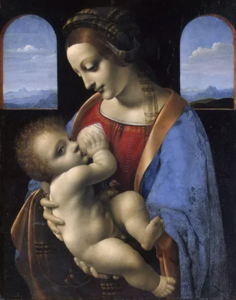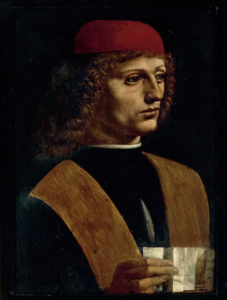 The National Gallery’s Leonardo exhibition promises a unique chance to view his finest paintings and drawings. It also offers a glimpse of the artist’s true spirit
The National Gallery’s Leonardo exhibition promises a unique chance to view his finest paintings and drawings. It also offers a glimpse of the artist’s true spirit
Renaissance man though he undoubtedly was, Leonardo da Vinci was very much a part-time artist. Among the wrecks and ruins and dubious attributions, Leonardo produced very few paintings – around 20, about some of which scholarly debate continues. There are nine in the National Gallery exhibition, all dated from his years in Milan, as well as Giampietrino’s almost 8 metre-wide 1520 scale copy of Leonardo’s 1492-8 Last Supper.
What Leonardo paintings are left are in varying states of incompletion, over-restoration and decay. Varnish has browned and grown opaque, paint layers have been scrubbed away, colour (particularly the lapis lazuli blue) has gone out of whack, and restorers and improvers as well as time have done their work.
No one knows if he made the engraving himself, but Leonardo undoubtedly drew the design. The engraving is an endlessly turning and criss-crossing knot, a sort of visual knitting whose repeated swirls and flourishes recall Islamic patterns, well known from imports to Italy in the 1400s. The wall label would like us to regard this gorgeous pattern as a precursor of abstract art. It bursts before us and sucks us in. It is a visual labyrinth, an optical game. The severity of the engraving and the pleasure of the pattern are as one.
The more scholarly art-historical pleasures of deciding what this engraving means and why it was made are just a footnote to the many mysteries and conundrums surrounding Leonardo’s life and work.
 Some mysteries are more compelling than others, and some things we can never know for sure. What, for example, is the music Leonardo’s Musician, also known as Portrait of a Young Man, is reading? Has he just stopped singing or is he about to begin? What moment is this, and who is he, shown in three-quarter profile, one hand lightly holding the unfolded sheet of music, his face serious but not severe, the pupil of one eye larger than the other?
Some mysteries are more compelling than others, and some things we can never know for sure. What, for example, is the music Leonardo’s Musician, also known as Portrait of a Young Man, is reading? Has he just stopped singing or is he about to begin? What moment is this, and who is he, shown in three-quarter profile, one hand lightly holding the unfolded sheet of music, his face serious but not severe, the pupil of one eye larger than the other?
The painting and the viewer are left hovering. All these factors come into play as we stand and look, and become part of the experience of looking itself, caught between one thing and another, one moment and the next. The same thing happens in the room where Leonardo’s two versions of the Virgin of the Rocks face one another for the first time in their long histories. The first, a 1485 altarpiece (from the Louvre), is gloomy with yellowed varnish and sunken colour. The second version, to which Leonardo returned throughout the 1490s and again in 1506-8, is from the National Gallery’s collection.
I keep turning between them to make comparisons, seeing the same gaping views between the rocks, then larger and smaller differences everywhere I look. In the end, as well as the cleaner and more vibrant colour, it is the gaping sculpted void under the Virgin’s cloak in the second version that drags me in. In fact, it is the architecture of space that really makes both these paintings, and I find myself looking over and around the figures in both versions.
Everywhere else one looks, there are drawings, both by Leonardo and his assistants and followers, a constant commentary on form. Slow metal-point drawings, faster pen-and-ink and chalk drawings, a sea of drawings on which Leonardo’s few paintings, and those of his contemporaries and followers, float like so much flotsam.
